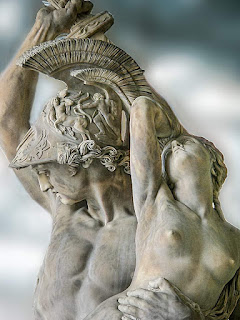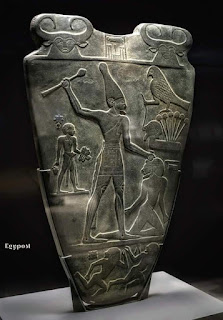It is the first Pharaonic historical paintings known as the Naarmer or Narmer as it was written on it. It was written and drawn during the reign of Pharaoh Narmer, who united the two Egyptian faces, and embodied the scene of the unification of the two countries, and the victory of the Pharaonic king over his enemies. The name of the pharaoh on the board is "Naar-Murr" , written with the symbols "Fish" and pronounced "Naaar" and "Chisel" and pronounced "Murr". This difference in pronunciation of the name, as it is believed that the name has several meanings, and archaeologists have not agreed on the true meaning of the name . There is at the top of the panel in the first face, we find two sides of a woman who has an ear and two horns of a cow, which is the goddess Mebat, which was named after Hathor, and between the two sides we find the facade of the palace, “Al-Sarkh” and the name of Narmer is engraved inside, and in the picture below ...









